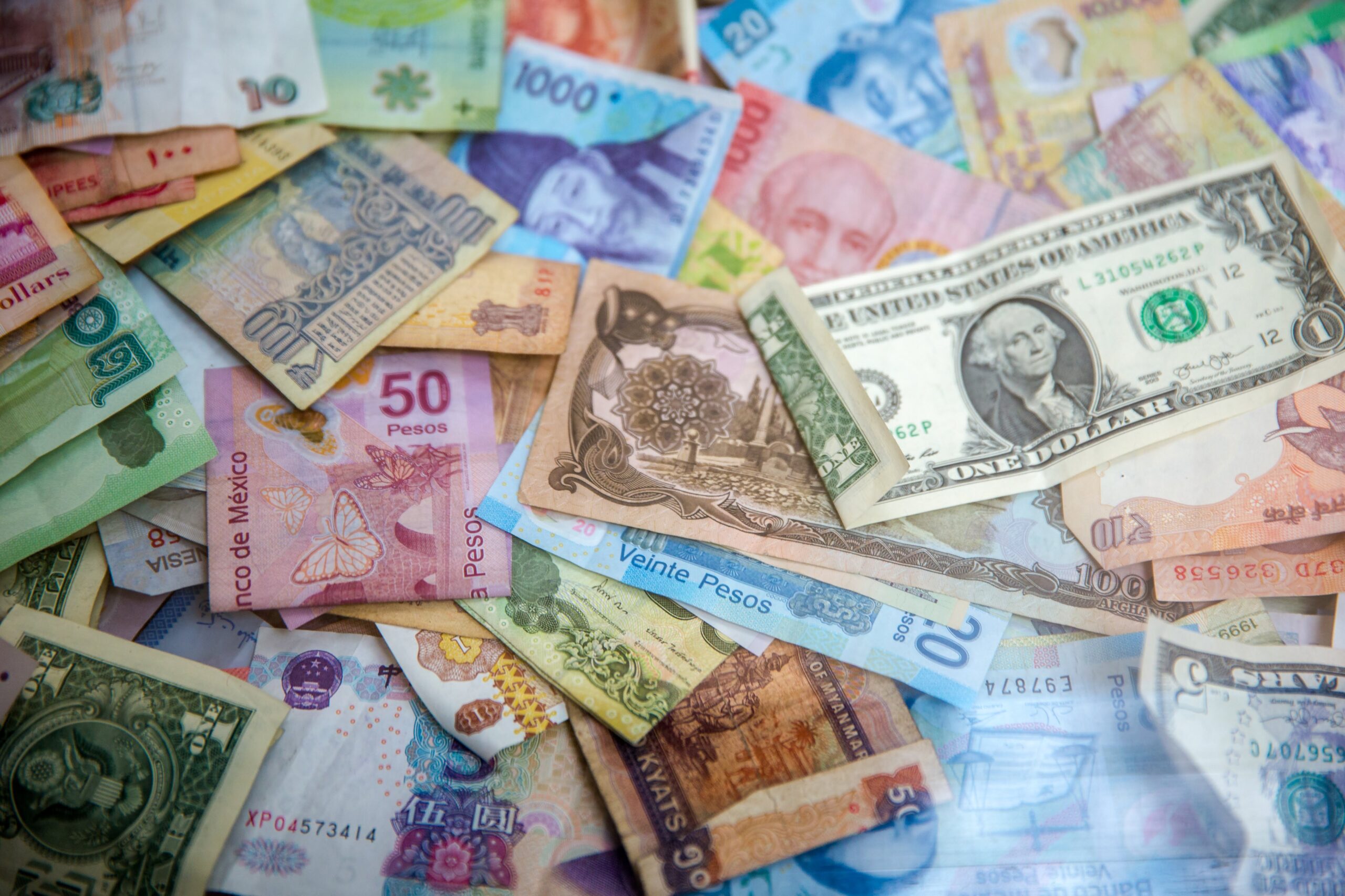Why the World Will Never Suffer a Great Depression Again—Understanding the International Monetary Fund (IMF)
August 27, 2015 |
| 7 min read

Fear is the greatest enemy of real change. The greatest fear for a person is to not have enough money to buy food, shelter, clothing, and healthcare.
So-called experts, pundits, politicians, and many others, usually having a personal agenda to promote themselves and their rhetoric for money, often in the form of paid endorsements or publishing a book, spread fear. This fear gets people talking and giving their opinions, usually completely uninformed and misleading, about the world’s money system collapsing and causing widespread human suffering.
FACT #1: There will never be a time when the world’s financial markets will collapse to the point where there isn’t enough money to keep the economies of the world going.
FACT #2: The people of the world are never convinced of fact #1, because they are more easily controlled by fear; and because fear is more profitable than the real truth.
Until a drastic change is made in the way that humans look at money; and more importantly, a drastic change in the way that they look at each other (valuing each other as equal human beings above all other lifeforms upon earth), there will always exist politicians (leaders) and merchants (business) that uphold and support the world’s money system.
The Great Depression of the United States taught the politicians and merchants of the world a great lesson in how to manage things so that the world never experiences anything like the Great Depression. One of the most important economic inventions from this lesson was the establishment of the International Monetary Fund (IMF).
If you are a person who really doesn’t care, then you are part of the problem, and thus uninformed and apathetic, will fall for all the doomsday reports of the fear mongers. If you do not want to fear; and you have a sincere desire to make a change, which change can ONLY come through the support of THumP®’s proposals, which include rewriting the U.S. Constitution to allow the people to control their own financial interest, then you will study what is offered below. Otherwise, you can ignorantly discount everything THumP®
stands for, tell yourself that you don’t want to take the time to learn anything new, and continue to fear and perpetuate poverty and inequality.
Here’s a basic outline of the IMF:
Why the IMF was created and how it works
The IMF, also known as the Fund, was conceived at a UN conference in Bretton Woods, New Hampshire, United States, in July 1944. The 44 countries at that conference sought to build a framework for economic cooperation to avoid a repetition of the competitive devaluations that had contributed to the Great Depression of the 1930s.
The IMF’s responsibilities: The IMF’s primary purpose is to ensure the stability of the international monetary system—the system of exchange rates and international payments that enables countries (and their citizens) to transact with each other. The Fund’s mandate was updated in 2012 to include all macroeconomic and financial sector issues that bear on global stability.
Membership: 188 countries
Headquarters: Washington, D.C.
Executive Board: 24 Directors each representing a single country or a group of countries
Staff: Approximately 2,600 from 147 countries
Total quotas: US$327 billion (as of 3/13/15)
Biggest borrowers (amounts outstanding as of 3/13/15): Portugal, Greece, Ireland, Ukraine
Biggest precautionary loans (amount agreed as of 3/13/15): Mexico, Poland, Colombia, Morocco
Surveillance consultations: 122 consultations in 2013 and 129 in 2014
Technical assistance: 274 person years in FY2013 and 285 in FY2014
Original aims:
promote international monetary cooperation;
facilitate the expansion and balanced growth of international trade;
promote exchange stability;
assist in the establishment of a multilateral system of payments; and
make resources available (with adequate safeguards) to members experiencing balance of payments difficulties.
The IMF’s fundamental mission is to ensure the stability of the international monetary system. It does so in three ways: keeping track of the global economy and the economies of member countries; lending to countries with balance of payments difficulties; and giving practical help to members.
Surveillance
The IMF oversees the international monetary system and monitors the economic and financial policies of its 188 member countries. As part of this process, which takes place both at the global level and in individual countries, the IMF highlights possible risks to stability and advises on needed policy adjustments.
Watch videoLending
A core responsibility of the IMF is to provide loans to member countries experiencing actual or potential balance of payments problems. This financial assistance enables countries to rebuild their international reserves, stabilize their currencies, continue paying for imports, and restore conditions for strong economic growth, while undertaking policies to correct underlying problems. Unlike development banks, the IMF does not lend for specific projects.
Watch videoTechnical Assistance
The IMF helps its member countries design economic policies and manage their financial affairs more effectively by strengthening their human and institutional capacity through technical assistance and training. The IMF aims to exploit synergies between technical assistance and training—which it calls capacity development—to maximize their effectiveness.
The IMF has played a part in shaping the global economy since the end of World War II.
Cooperation and reconstruction (1944–71)
As the Second World War ends, the job of rebuilding national economies begins. The IMF is charged with overseeing the international monetary system to ensure exchange rate stability and encouraging members to eliminate exchange restrictions that hinder trade.
Watch videoThe end of the Bretton Woods System (1972–81)
After the system of fixed exchange rates collapses in 1971, countries are free to choose their exchange arrangement. Oil shocks occur in 1973–74 and 1979, and the IMF steps in to help countries deal with the consequences.
Debt and painful reforms (1982–89)
The oil shocks lead to an international debt crisis, and the IMF assists in coordinating the global response.
Societal Change for Eastern Europe and Asian Upheaval (1990–2004)
The IMF plays a central role in helping the countries of the former Soviet bloc transition from central planning to market-driven economies.
Globalization and the Crisis (2005 – present)
The implications of the continued rise of capital flows for economic policy and the stability of the international financial system are still not entirely clear. The current credit crisis and the food and oil price shock are clear signs that new challenges for the IMF are waiting just around the corner.
And the one thing, (the secret combination of political and business interests), that the IMF introduced, that the people of the world do not understand, is where IMF gets its money.
Where the IMF gets its money
Each member of the IMF is assigned a quota, based broadly on its relative size in the world economy, which determines its maximum contribution to the IMF’s financial resources. Upon joining the IMF, a country normally pays up to one-quarter of its quota in the form of widely accepted foreign currencies (such as the U.S. dollar, euro, yen, or pound sterling) or Special Drawing Rights (SDRs). The remaining three-quarters are paid in the country’s own currency.
The U.S. Federal Reserve prints dollars.
The European Central Bank prints euros.
And the IMF prints … issues … grants … (there simply is not a proper word that explains the real truth) supports SDRs.
And the SDRs’ values are really determined and accounted for by the standard of the world’s greatest consuming nation: the United States … the dollar.
Of course, the IMF would never want to call the SDR what it really is: a new world currency, because that scares people, especially uninformed, misled, and fearful Americans, whose lifestyles are principally responsible for the economy of the world, AND FOR THE POVERTY THAT THIS ECONOMY CREATES!
Consider the official definition of SDR … Oh, the confusion:
“The SDR is neither a currency, nor a claim on the IMF. Rather, it is a potential claim on the freely usable currencies of IMF members. Holders of SDRs can obtain these currencies in exchange for their SDRs in two ways: first, through the arrangement of voluntary exchanges between members; and second, by the IMF designating members with strong external positions to purchase SDRs from members with weak external positions. In addition to its role as a supplementary reserve asset, the SDR serves as the unit of account of the IMF and some other international organizations.”
THumP®’s point is:
There is an economic beast that controls the economies of the world. It will not go away, and it grows bigger each day. This beast is led around by the politicians and merchants of the world and does their bidding. THumP®’s intent is to take the reigns out of the hands of the politicians and merchants of the earth and let the people (the majority) lead the beast where they want it to go, and do what the people want it to do.
This can only be done by changing the laws that manage the beast. This can only be done by changing the document that gives the beast its power and great authority: the U.S. Constitution.


